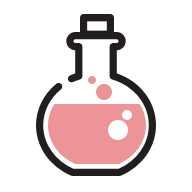- Remove All
 Your shopping cart is currently empty
Your shopping cart is currently empty
Shopping Cart
STING Agonist C11
Catalog No. T38161Cas No. 875863-22-2
Alias STING Agonist C11
STING agonist C11 is an agonist of the stimulator of interferon genes (STING) pathway.1 It induces secretion of type I IFN from THF and MM6 cells when used at a concentration of 50 μM. STING agonist C11 induces phosphorylation of IFN regulatory factor 3 (IRF3) and increases expression of IFIT1 and viperin, but not IL-1β, IL-6, or IL-8 in THF cells in a STING-dependent manner. It reduces viral titers of chikungunya, Venezuelan equine encephalitis, o'nyong-nyong, Mayaro, and Ross River viruses grown in THF cells (EC90s = 16.44, 16.7, 18.84, 25.19, and 22.57 μM, respectively), an effect that is dependent on the presence of STING and the IFN-α/β receptor (IFNAR).

STING Agonist C11
Catalog No. T38161Alias STING Agonist C11Cas No. 875863-22-2
STING agonist C11 is an agonist of the stimulator of interferon genes (STING) pathway.1 It induces secretion of type I IFN from THF and MM6 cells when used at a concentration of 50 μM. STING agonist C11 induces phosphorylation of IFN regulatory factor 3 (IRF3) and increases expression of IFIT1 and viperin, but not IL-1β, IL-6, or IL-8 in THF cells in a STING-dependent manner. It reduces viral titers of chikungunya, Venezuelan equine encephalitis, o'nyong-nyong, Mayaro, and Ross River viruses grown in THF cells (EC90s = 16.44, 16.7, 18.84, 25.19, and 22.57 μM, respectively), an effect that is dependent on the presence of STING and the IFN-α/β receptor (IFNAR).
| Pack Size | Price | Availability | Quantity |
|---|---|---|---|
| 500 μg | Inquiry | 35 days | |
| 1 mg | Inquiry | 35 days | |
| 5 mg | Inquiry | 35 days | |
| 10 mg | Inquiry | 35 days |
Bulk & Custom
Add to Cart
Questions
View MoreContact us for more batch information
Resource Download
Product Introduction
Bioactivity
Chemical Properties
| Description | STING agonist C11 is an agonist of the stimulator of interferon genes (STING) pathway.1 It induces secretion of type I IFN from THF and MM6 cells when used at a concentration of 50 μM. STING agonist C11 induces phosphorylation of IFN regulatory factor 3 (IRF3) and increases expression of IFIT1 and viperin, but not IL-1β, IL-6, or IL-8 in THF cells in a STING-dependent manner. It reduces viral titers of chikungunya, Venezuelan equine encephalitis, o'nyong-nyong, Mayaro, and Ross River viruses grown in THF cells (EC90s = 16.44, 16.7, 18.84, 25.19, and 22.57 μM, respectively), an effect that is dependent on the presence of STING and the IFN-α/β receptor (IFNAR).References1. Gall, B., Pryke, K., Abraham, J., et al. Emerging alphaviruses are sensitive to cellular states induced by a novel small-molecule agonist of the STING pathway. J. Virol. 92(6), e01913-01917 (2018). STING agonist C11 is an agonist of the stimulator of interferon genes (STING) pathway.1 It induces secretion of type I IFN from THF and MM6 cells when used at a concentration of 50 μM. STING agonist C11 induces phosphorylation of IFN regulatory factor 3 (IRF3) and increases expression of IFIT1 and viperin, but not IL-1β, IL-6, or IL-8 in THF cells in a STING-dependent manner. It reduces viral titers of chikungunya, Venezuelan equine encephalitis, o'nyong-nyong, Mayaro, and Ross River viruses grown in THF cells (EC90s = 16.44, 16.7, 18.84, 25.19, and 22.57 μM, respectively), an effect that is dependent on the presence of STING and the IFN-α/β receptor (IFNAR). References1. Gall, B., Pryke, K., Abraham, J., et al. Emerging alphaviruses are sensitive to cellular states induced by a novel small-molecule agonist of the STING pathway. J. Virol. 92(6), e01913-01917 (2018). |
| Alias | STING Agonist C11 |
| Molecular Weight | 382.44 |
| Formula | C19H18N4O3S |
| Cas No. | 875863-22-2 |
Storage & Solubility Information
| Storage | Powder: -20°C for 3 years | In solvent: -80°C for 1 year | Shipping with blue ice. |
| Solubility Information | DMSO: Soluble |
Calculator
In Vivo Formulation Calculator (Clear solution)
Please enter your animal experiment information in the following box and click Calculate to obtain the mother liquor preparation method and in vivo formula preparation method:
Mother liquor preparation method: 2 mg of drug dissolved in 50 μL DMSO (mother liquor concentration of 40 mg/mL), if you need to configure a concentration that exceeds the solubility of the product, please contact us first.
(mother liquor concentration of 40 mg/mL), if you need to configure a concentration that exceeds the solubility of the product, please contact us first.
Preparation method for in vivo formula: Take 50 μL DMSO main solution, add 300 μLPEG300
main solution, add 300 μLPEG300 mix well and clarify, then add 50 more μL Tween 80, mix well and clarify, then add 600 more μLddH2O
mix well and clarify, then add 50 more μL Tween 80, mix well and clarify, then add 600 more μLddH2O mix well and clarify
mix well and clarify
For Reference Only. Please develop an appropriate dissolution method based on your laboratory animals and route of administration.
Dose Conversion
You can also refer to dose conversion for different animals. More Dose Conversion
Tech Support
Please see Inhibitor Handling Instructions for more frequently ask questions. Topics include: how to prepare stock solutions, how to store products, and cautions on cell-based assays & animal experiments, etc
Keywords
Related Tags: buy STING Agonist C11 | purchase STING Agonist C11 | STING Agonist C11 cost | order STING Agonist C11 | STING Agonist C11 chemical structure | STING Agonist C11 formula | STING Agonist C11 molecular weight

Copyright © 2015-2025 TargetMol Chemicals Inc. All Rights Reserved.




